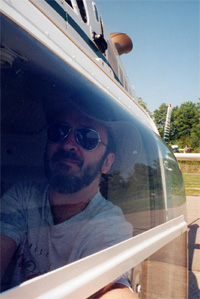
Building a Pelican (February 17th 2001, part 2)
|
February 17th 2001 Week 33 of our follow-up of the building of a Pelican Sport from Ultravia Aero International Inc. |
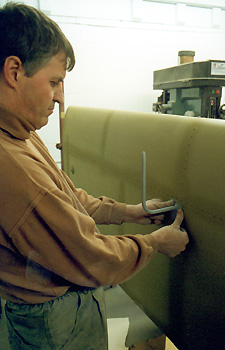 |
Christian installing the Pitot tube.
The Pitot tube is mounted on the wing in the palne ongitudinal axis. (The wing being mounted verticaly on a support jig here, the front of the plane would be upward.). |
||||
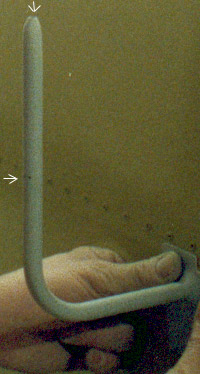 |
|||||
| The Pitot-static system is connected to three essential flight instruments : l'altimeter, the vertical speed indicator and the airspeed indicator. This instrument is made of two tubes wich connects these instruments to the outside air. On most planes, these two tubes are mounted together, outside the plane at a point away from turbulences. | |||||
| The end of the tube is open so taht the relative wind is rammed into it. (upper arrow). This tube is then led to one chamber of the airspeed indicator.
The static tube is a breathing tube for the instruments. The arrow sohows two of the three holes for this sytem here. These holes gather static or atmospheric pressure. |
|||||
| The static tube leads to the altimeter, the vertical speed indicator and the air speed indicator. The airspeed indicator uses both ram air form the Pitot tube and static air, while the other two instruments use only the air pressure from the static line.
These tubes can easely become clogged or iced. Therefore a cover is usually placed over the end of the tubes to keep particules out. The Pitot system is vital to all planes. If these tube become damaged or plugged, the pilot's most important information, the altitude and airspeed is cut off. (Information from : Above and Beyond, The Encyclopedia of Aviation and Space Sciences, Volume 10, New Horizons Publishers, Inc., 1966, page 1816. |
|||||
 |
|||||
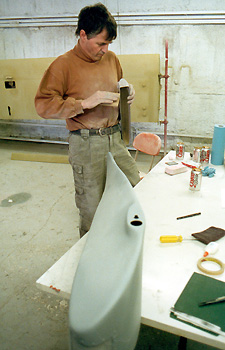 |
|||||
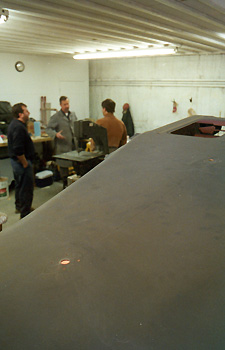 |
|||||
| Wing tips ready tio receive the position lights.
Right: holes were drilled in the fuselage top to install antennas. |
|||||
